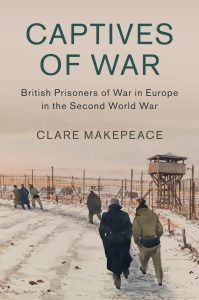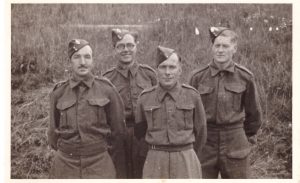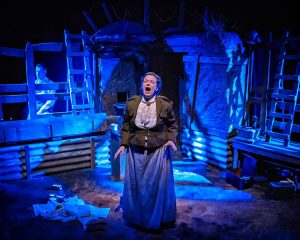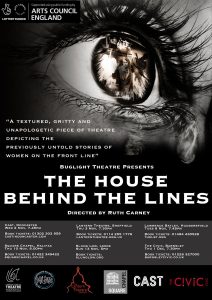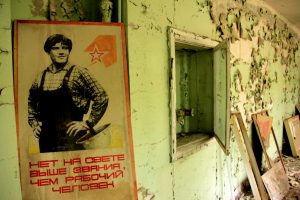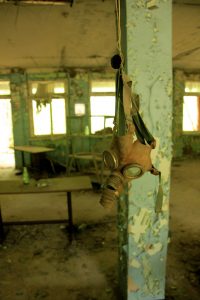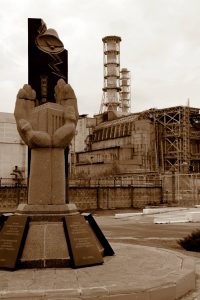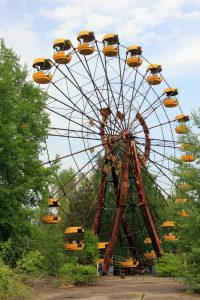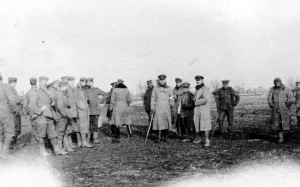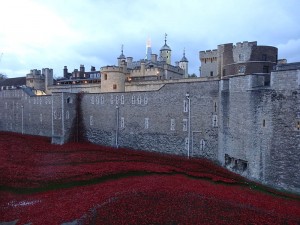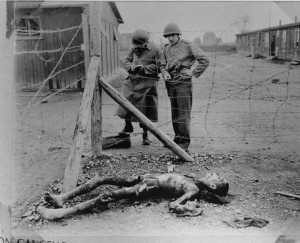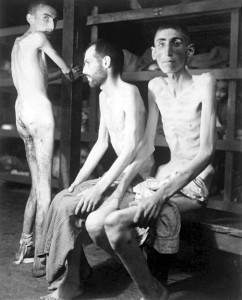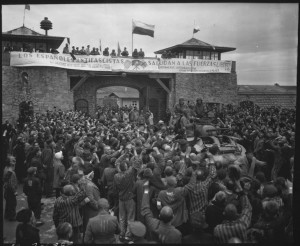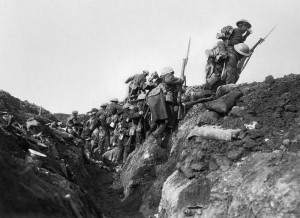Earlier this year, IWM decided to move its Research Room to a five-working-days advance ordering system. Today, I sent this letter, signed by over ninety historians, to IWM’s Director General, Diane Lees, and its Chairman of Trustees, Air Chief Marshal Sir Stuart Peach.
Dear Ms Lees,
We, the undersigned, are greatly disappointed by the Imperial War Museums’ decision to move the Research Room in London to an advanced ordering system. This will significantly hinder academics and students’ ability to research productively and, we believe, will eventually restrict studies of modern warfare and impair our understanding of modern conflict.
IWM London possesses an unparalleled collection of documents and printed books, including some printed material which is not available in any other library. This should be made as accessible and widely-available as possible.
Historical research is not carried out by religiously sticking to a preordained reading list but through a dynamic process of building upon insights found in one source by turning to another and constantly flicking between primary and secondary material. The decision to require researchers to order their material five working days in advance flies in the face of the way in which most war histories are produced and written. To have to wait five working days in order to follow up a line of enquiry will make our work laboriously slow, if not impossible. Many scholars and students based outside London only have limited periods for their research. The librarians who staff the Research Room are also exceptionally knowledgeable about the collections, and are often more helpful than the online catalogue when searching for material. Thus, it is only after having arrived in the Research Room, and having had the opportunity to discuss one’s research with staff, that it becomes apparent that certain collections or books will be of interest.
To justify this decision, IWM has set out that this practice is in line with many other research centres. However, the combination of a five-working-days advance ordering system, plus only opening the Research Room for twenty-four hours a week, is a particularly inflexible arrangement, which is not in line with other major national libraries and archives, such as the National Archives and the British Library.
Given IWM considered closing its library three years ago, we fear this change in policy is part of a wider strategy to move the Research Room and all the collections to Duxford, or close it down altogether. Both would have a devastating impact on research into modern conflict.
We also note that while much is being made of Duxford’s new state-of-the-art paper store, there is no mention of how documents and books will be preserved while being transported between London and Duxford. How is long-term preservation compatible with a 54-mile transportation process?
Finally, we are struck by the apparent lack of transparency about this process. What consultation took place, and with whom? We would have preferred to work with you behind the scenes on this, perhaps via the academic historian on the Board of Trustees, but note with dismay that no such person has been appointed to replace Professor Sir Hew Strachan.
It is saddening that IWM London has again decided to put up another obstacle to researchers and students’ ability to access and utilise this national library and its world-class collections. It sends another signal that serious research into modern warfare is not one of IWM’s priorities.
We hope you will reconsider this decision.
Yours sincerely,
Jad Adams, Research Fellow, School of Advanced Study, University of London
Sally Alexander, Emerita Professor of Modern History, Goldsmiths UL, Editorial Collective History Workshop Journal
Dr Alan Allport, Associate Professor, History, Syracuse University
Dr Phylomena H. Badsey, Western Front Association Universities Officer and Trustee
Professor Stephen Badsey, Professor of Conflict Studies, University of Wolverhampton
Dr Roderick Bailey, Lecturer in the History of Medicine, University of Oxford, and IWM Research Associate
Dr Antony Best, Associate Professor of International History, London School of Economics
Professor Jeremy Black, History, University of Exeter
Professor Lucy Bland, Professor of Social and Cultural History, Anglia Ruskin University
Dr Jonathan Boff, Senior Lecturer in Modern History, University of Birmingham
Professor J. M. Bourne BA PhD FRHistS, Hon. Professor of First World War Studies, University of Wolverhampton, Vice President of the Western Front Association
Dr Timothy Bowman, Senior Lecturer in modern British military history, School of History, University of Kent
Dr Gilly Carr, Senior Lecturer in Archaeology, University of Cambridge
Professor Sir Christopher Clark FBA AHAF, Regius Professor of History, University of Cambridge
Dr Robert Crowcroft, Senior Lecturer in History, University of Edinburgh
Mr Brian Curragh MA (University of Birmingham; British First World War Studies), independent researcher & author
Professor Douglas E. Delaney, Canada Research Chair in War Studies, Royal Military College of Canada
Professor Peter Doyle, Visiting Professor in History, LSBU
Dr Rachel Duffett, Senior Research Officer, University of Essex
John R. Ferris, Professor of History, The University of Calgary, Authorised Historian, GCHQ
Dr John Fisher, Senior Lecturer in International History, UWE
Dr Matthew Ford, Senior Lecturer in International Relations, University of Sussex
Ann-Marie Foster, doctoral student, Northumbria University
Dr Aimée Fox, Lecturer, Defence Studies Department, King’s College London
Professor Jo Fox, Director, Institute of Historical Research
Professor Martin Francis, Professor of War and History, University of Sussex
Barrie Friend, MBA, MA, independent researcher
Professor Peter Gatrell, FAcSS, FRHistS, Professor of Economic History, University of Manchester
Dr Jayne Gifford, Lecturer in Modern History, University of East Anglia
Midge Gillies, author
Dr Peter Gray, Director, Centre for War Studies, University of Birmingham
Professor Richard Grayson, Professor of C20th History, Goldsmiths, University of London
Dr Susan R. Grayzel, Professor, Utah State University
Timothy Halstead, Independent Historian
Dr Emma Hanna, School of History, University of Kent
Dr Barbara Hately, Independent Researcher
Andrea Hetherington, Writer & independent researcher
Professor Margaret R. Higonnet, Professor Emerita of English and Comparative Literature, University of Connecticut
Dr Grace Huxford, Lecturer in 19/20th Century British History, University of Bristol
Mr Alan Jackson, MPhil/PhD student (Defence Studies), King’s College London
Professor Peter Jackson, History, Humanities, University of Glasgow
Elspeth Johnstone, Hon. Secretary, The Douglas Haig Fellowship
Dr Max Jones, Senior Lecturer in Modern History, University of Manchester
Dr Spencer Jones, Senior Lecturer in Armed Forces & War Studies, University of Wolverhampton
Dr David Kaufman, Lecturer in History, University of Edinburgh
Dr Saul Kelly, Defence Studies Department, King’s College, London
Dr Chris Kempshall, Academic Advisory Board to Imperial War Museum’s First World War Centenary Digital Projects
Michael LoCicero PhD, Commissioning Editor, Helion & Company
Dr Jenny Macleod, Senior Lecturer in 20th century History, University of Hull
Dr Clare Makepeace, Honorary Research Fellow, Birkbeck, University of London
Stephen Manning, postgraduate student, University of Wolverhampton
Phil McCarty, PhD student, University of Wolverhampton
Charles Messenger, Independent Military Historian
Professor Bob Moore, University of Sheffield/Institut für Zeitgeschichte, München
Kieron Moore, Independent Scholar
Dr Steve Morewood, Senior Lecturer in International History, University of Birmingham
Miss Francesca Morphakis, PGR student, The University of Edinburgh
Dr Emma Newlands, Lecturer in History, University of Strathclyde
Professor Lucy Noakes, Rab Butler Chair in Modern History, University of Essex
Dr Lizzie Oliver, Researching FEPOW History Group
Prof Haluk Oral, Gallipoli Campaign Researcher and author
Professor T.G. Otte, Professor of Diplomatic History, School of History, University of East Anglia
Professor Richard Overy, History, University of Exeter
Meg Parkes MPhil, Hon. Research Fellow, Liverpool School of Tropical Medicine
Dr Juliette Pattinson, Reader in Modern History and Head of the School of History, University of Kent
Dr Julie Peakman, Honorary Fellow, Birkbeck College, University of London
Professor Catriona Pennell, Associate Professor of History, University of Exeter
Dr Matthew Powell, Senior Teaching Fellow, PBS, Royal Air Force College Cranwell, University of Portsmouth
Dr Tammy M. Proctor, Distinguished Professor and Department Head of History, Utah State University
Dr James Pugh, Lecturer in Modern History, University of Birmingham
Dr Pierre Purseigle, FRHistS, Associate Professor, University of Warwick / International Society for First World War Studies
Ms. Sneha Reddy, PhD candidate, University of St Andrews.
Dr Linsey Robb, Lecturer in Modern British History, Northumbria University
Stephen Roberts, PhD candidate at MMU and independent researcher
Professor Michael Roper, Department of Sociology, University of Essex
Dr Stephanie Seul, Lecturer in Media History, University of Bremen, Germany
Professor Gary Sheffield, Chair of War Studies, University of Wolverhampton
Dr Terry Smyth, Community Fellow, Department of History, University of Essex
John Mason Sneddon BSc MA PhD. Independent Historian
Dr John Spencer, independent scholar and author
Professor Peter Stanley, UNSW Canberra
Professor David Stevenson, Professor of International History, London School of Economics and Political Science
Miss Sarah Stewart, Independent Researcher, Your History Revealed.
Dr Anne Summers, Honorary Research Fellow, Birkbeck, University of London; Chair, Friends of The Women’s Library
Martin Thomas, Professor of Imperial History, University of Exeter
Dr Dan Todman, Senior Lecturer, History, Queen Mary, University of London
Professor Christina Twomey, Head of Philosophical, Historical and International Studies, Faculty of Arts, Monash University
Professor Laura Ugolini, Professor of History, University of Wolverhampton
Dr Wendy Ugolini, Senior Lecturer in British History, University of Edinburgh
Robert N Watt, POLSIS, The University of Birmingham
Dr Dan Whittingham, Lecturer in the History of Warfare, Department of History, University of Birmingham
Andrew Wiest, University Distinguished Professor of History, Founding Director of the Dale Center for the Study of War and Society, The University of Southern Mississippi
Dr Oliver Wilkinson, Research Fellow, University of Wolverhampton

